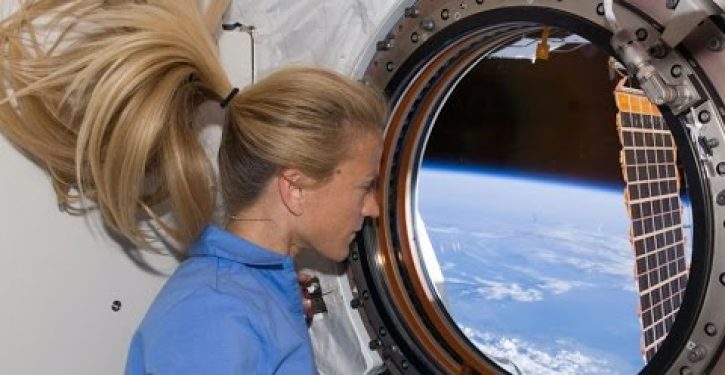
“Before long-term space travel is a reality, scientists must solve a hurdle of biology: Our bodies break down in space. Some 40% of the human body by weight is skeletal muscle—the kind that moves limbs and joints and holds the body upright….250 miles above the Earth’s surface, in the reduced gravity of the International Space Station, astronauts’ muscles get weaker. To study the phenomenon, a team at Stanford School of Medicine grew human muscle cells in a laboratory on Earth and then launched the samples to the ISS, where astronauts tended to them for a week,” reports the Wall Street Journal:
Growing in enclosed chambers, supported on scaffolds made of collagen, the space cells formed shorter muscle fibers than cells in identical conditions on Earth. The changes in biology were similar to those in a disorder linked to age called sarcopenia in which muscles weaken and waste away…. the space environment triggers a suite of changes. The immune system is shocked into a state of high alert, as if under attack by infection. Stem cells in the bone marrow are slow to manufacture red blood cells, turning astronauts anemic. Heart muscle weakens, and bone density decreases….
Scientists need setups like Huang’s because it isn’t practical to experiment on the astronaut crew. Engineered tissue that mimics the human body is “the best way to get the most information that is the most useful,” Mason said. Huang and team were able to show that they could ward off some of the biological changes triggered by microgravity with either of two drugs known to help tissue repair. “Especially for the longer space flights, it will become very important to think of ways to combat the effects of microgravity,” Huang said. “This could be a platform for identifying drugs that astronauts or space travelers would be able to take to help them.”
And “human blood stem cells have been made in a laboratory for the first time, which could significantly improve how we treat certain types of cancer,” reports New Scientist. “The cells became functional bone marrow at similar levels to those seen after umbilical cord blood cell transplants. Treating cancers such as leukemia and lymphoma via radiation and chemotherapy can destroy the blood-forming cells in bone marrow. A stem cell transplant means that new, healthy bone marrow and blood cells can grow.”
A genetically-modified chicken lays eggs that people allergic to eggs can eat. Scientists have genetically engineered a cow that produces human insulin in its milk.
Genetically-engineered skin bacteria keep some mosquitoes away. Scientists have genetically engineered a fly species to eat more waste.
Genetic engineering recently produced pork that people who are allergic to pork can eat.
A virus is being used to cure deafness in new gene therapy. Researchers also discovered that a plant virus could be used to save crops from root-eating pests.



